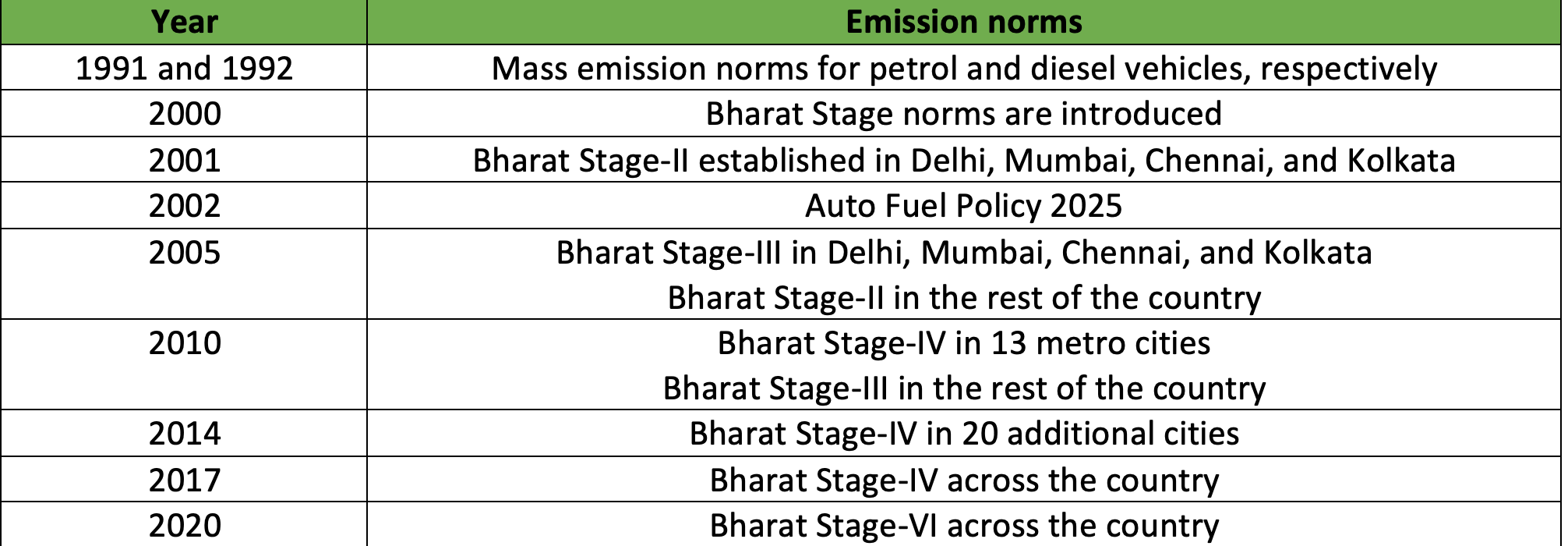Context
A study on the ‘Health and Economic Impact of Air pollution in India’ estimates that 18 per cent of all deaths and a loss of 1.4 per cent of GDP in 2020 could be attributed to air pollution1. In pollution hotpots like the capital of Delhi, transport is seen contributing between 13 – 18 per cent during peak pollution months. This, despite the country’s fairly vehicle ownership and per capita transport emission rates. As the market develops, the need for stricter emission norms become all the more necessary. In the second part of this series, we discuss India’s primary vehicle ownership norms.
Table 1: A history of India’s emission norms

Source: Author’s compilation from different sources
CAFE norms
The Corporate Average Fuel Efficiency/ Economy (CAFÉ) norms were established in 2017 worldwide and aimed to bring down average corporate emissions. These apply to auto-manufacturers and are incentivised by either increasing fuel efficiency or reducing fuel consumption. Both help lower CO2 while also reducing the country’s fuel import dependence and its vehicular pollution. Under this norm, corporate average CO2 emissions are mandated to be less than 130 gm/km per phase I (till 2022) and less than 113 gm/ km per phase II (post-2022).
BS norms
The first Bharat Stage (BS) norms came into effect in 2000 and have had multiple iterations since. These standards are set by the Central Pollution Control Board of India, and all vehicle manufacturers must mandatorily only sell vehicles that comply with these norms. With every new iteration, these standards aim at tighter regulations by reducing the permissible level of tailpipe pollutants. For example, BS-IV – introduced in 2017, allowed 50 parts per million (ppm) of sulphur, while the new and updated BS-VI – applicable from 2020 allows only 10 ppm of sulphur. A further comparison on permissible limits is presented below:
Table 2: BS-VI vs BS-IV

Source: Author’s compilation from multiple sources
Who should care?
- Citizens
- Vehicle manufacturers
- Policymakers
Read Part 1: Vehicular emissions in India
References
- [1] Pandey and Sangewar, “Air Quality in India: An Explainer.”



